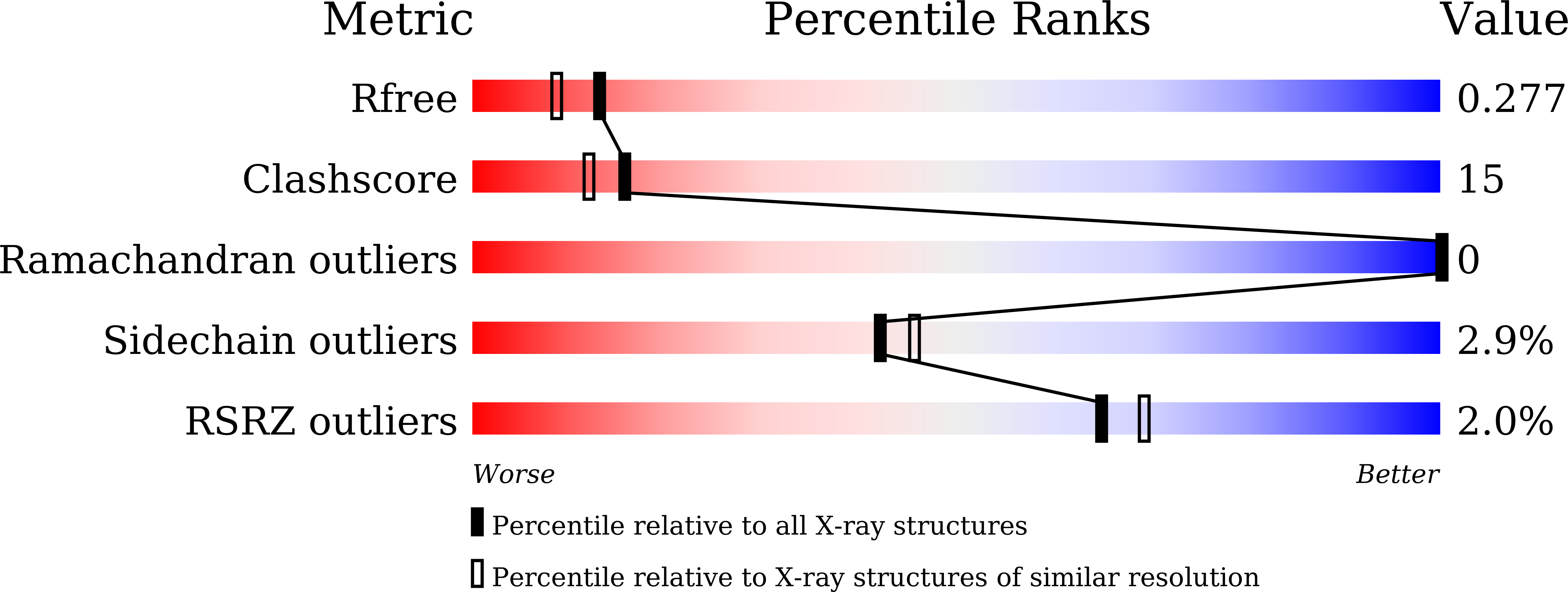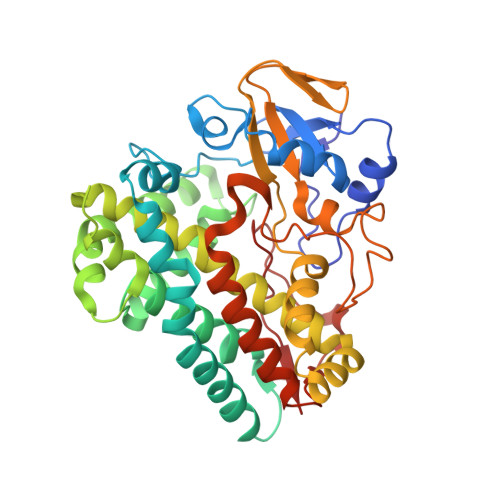Engineering the Substrate Specificity of a P450 Dimerase Enables the Collective Biosynthesis of Heterodimeric Tryptophan-Containing Diketopiperazines.
Sun, C., Ma, B.D., Li, G., Tian, W., Yang, L., Peng, H., Lin, Z., Deng, Z., Kong, X.D., Qu, X.(2023) Angew Chem Int Ed Engl 62: e202304994-e202304994
- PubMed: 37083030
- DOI: https://doi.org/10.1002/anie.202304994
- Primary Citation of Related Structures:
8HNY, 8HNZ, 8HO0, 8HO1 - PubMed Abstract:
Heterodimeric tryptophan-containing diketopiperazines (HTDKPs) are an important class of bioactive secondary metabolites. Biosynthesis offers a practical opportunity to access their bioactive structural diversity, however, it is restricted by the limited substrate scopes of the HTDKPs-forming P450 dimerases. Herein, by genome mining and investigation of the sequence-product relationships, we unveiled three important residues (F387, F388 and E73) in these P450s that are pivotal for selecting different diketopiperazine (DKP) substrates in the upper binding pocket. Engineering these residues in Nas F5053 significantly expanded its substrate specificity and enabled the collective biosynthesis, including 12?self-dimerized and at least 81 cross-dimerized HTDKPs. Structural and molecular dynamics analysis of F387G and E73S revealed that they control the substrate specificity via reducing steric hindrance and regulating substrate tunnels, respectively.
Organizational Affiliation:
State Key Laboratory of Microbial Metabolism and School of Life Sciences and Biotechnology, Shanghai Jiao Tong University, 800 Dongchuan Rd., 200240, Shanghai, China.
















